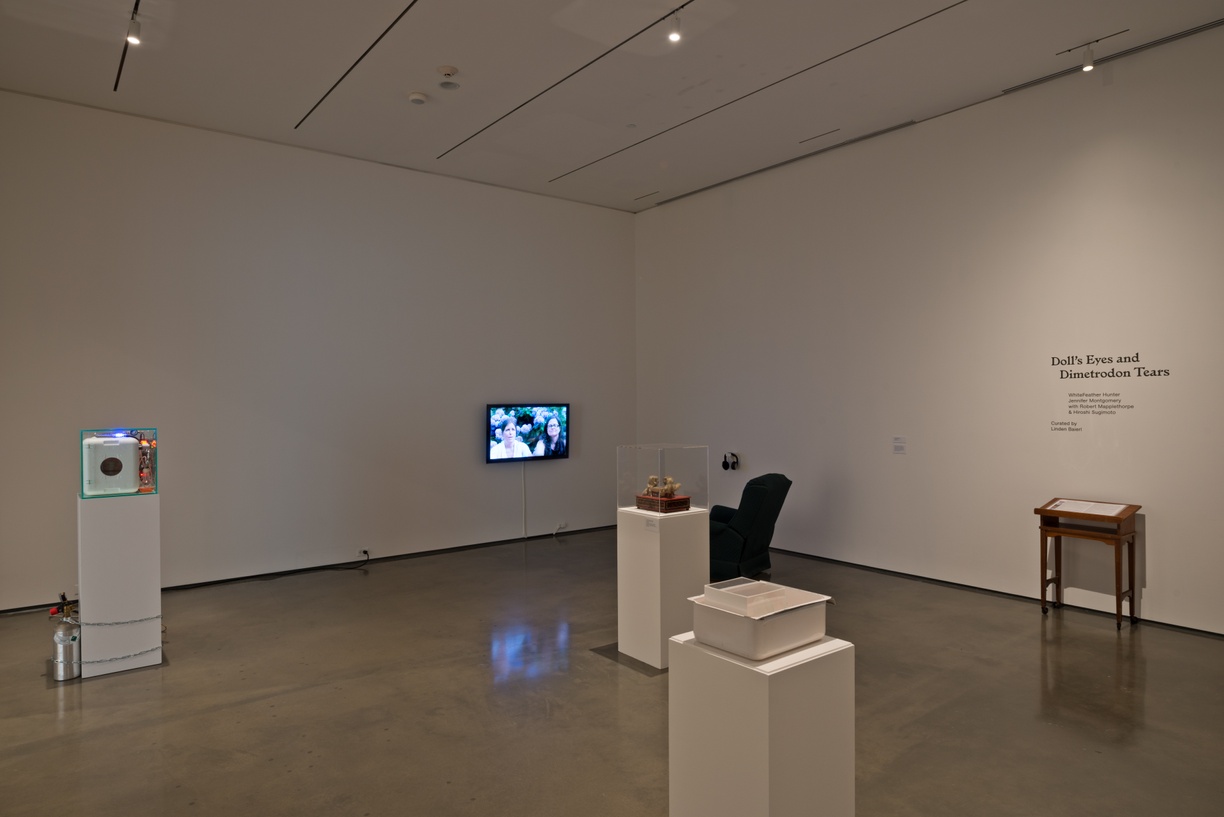
- Linden Baierl
Work by artists WhiteFeather Hunter and Jennifer Montgomery with still life photography by Robert Mapplethorpe and Hiroshi Sugimoto, an animal automaton, and archival materials from the Hartsdale Pet Cemetery
Doll’s eyes refers to a test of brainstem functioning, which is also a clinical criterion of brain death in comatose human patients. The test is performed by rotating the head from one side to the other, while observing whether the eyes remain fixed in position or move reflexively in the opposite direction of the rotation.
As method and metaphor for how we comprehend the limits of human life, Doll’s Eyes and Dimetrodon Tears proposes a gentle stretching of life-death ontologies through a nexus of echoes between the animate and the inanimate, the human and the animal. The exhibition is devised as a texture of affect, kinship, and becoming, in which animal figures appear in place of the human—sometimes as themselves and sometimes as spectral, miniaturized, or arrested representations and traces. Human-animal substitutions, alongside instances of cellular and mechanical intermingling across distinctions of species, forge connections between pampered pets, microbial companion species, and animals facing imminent mass extinction.
WhiteFeather Hunter initiates collaborative and durational works at the intersection of craft and bioart that often weave together human and nonhuman animal elements. In doing so, Hunter’s works engage the ambiguous, semi-living status of cell cultures and play with immortality at the cellular level.
Jennifer Montgomery’s longstanding interest in anthropomorphism is foregrounded in the artist’s recent video One Species Removed (2013), which touches upon the queerness of animal kinship, aging and the prolongation of life, the inadequacy of language to express grief, and the difference between individual death and extinction.
The exhibition will also include an animal automaton from the Murtogh D. Guinness Collection, archival material from the Hartsdale Pet Cemetery, and an elegiac display of still life photography by Robert Mapplethorpe and Hiroshi Sugimoto that introduces Dimetrodon.



